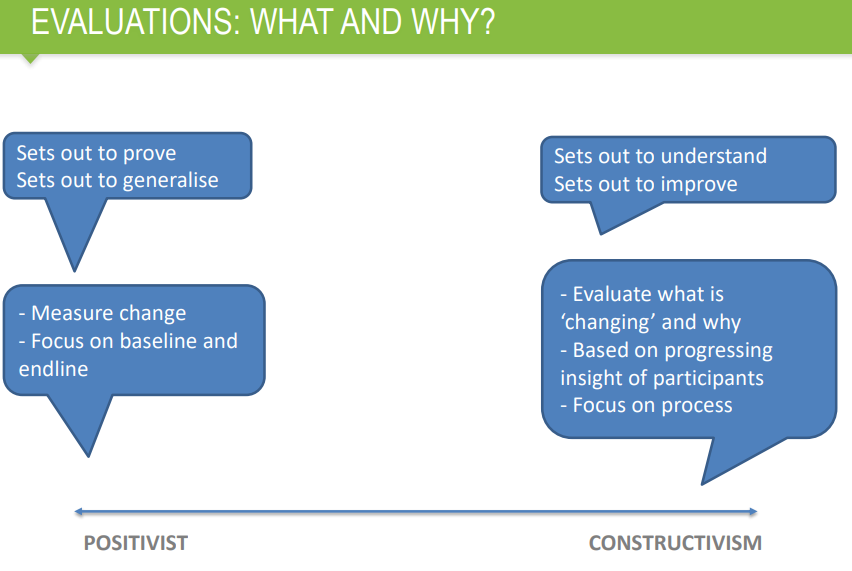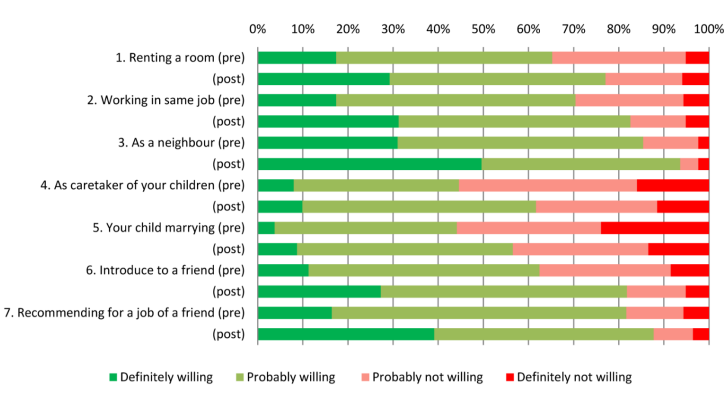RHMS - lecture 9 - qualitative data analysis
1/14
There's no tags or description
Looks like no tags are added yet.
Name | Mastery | Learn | Test | Matching | Spaced |
|---|
No study sessions yet.
15 Terms
streetlight effect / drunkard’s search
people are often looking for something where the light is good
type of bias
in research you need to look broader
what is an evaluation
a systemic determination of a subject’s merit, worth and significance, using criteria
3 core concepts in evaluating public health programs (outcome, impact, process)
outcome evaluations → ultimate goal to measure an effect
measure the effectiveness of an intervention in producing change
impact evaluations → to understand (long term impacts)
understand broader and long term impact of intervention
process evaluations → understand but also focus on barriers / facilitators
help stakeholders see how an intervention outcome or impact was achieved and what were the barriers.
positivism versus constructivism in evaluation
positivism → prove, generalize
measure change
constructivism → understand, improve
focus on process

social distance scale
example of outcome evaluation
questions are asked
how do you feel renting a room in your home to someone with leprosy
how do you feel about being a worker on the same job as someone with leprosy

example impact evaluation
impact evaluation often measured via quotes
example → ‘there is a change in our attitude. we are not afraid anymore that leprosy can be infectious’ (this effect can be described as; understanding)
It is very useful! As the village chief, I can share this information to the community. They should not be afraid of leprosy. They should not excommunicate the patient. Leprosy is not infectious. If it were not for this event then I would not know anything about leprosy (effect described as broader impact)
example process evaluation
can also be measured via quotes (very important to look at long term → months after event)
about family counseling; you just meet me, it is enough. my family doesn’t need to know about this visit.
study designs
RCT
quasi experiment
qualitative evaluations
participatory action research / evaluation
randomized controlled trial
randomly
Type of scientific (often medical) experiment that aims to reduce certain sources of bias when testing effectiveness of new treatments
Accomplished by randomly allocating subjects to two or more groups, treating them differently
One or more of the groups receive treatment(s) under investigation while one group serves as a control, receiving either the standard treatment or no treatment at all
quasi experiment
when RCTs are not feasible, do not have the funds to do this, or is not ethical.
treatment and controls groups may not be comparable at baseline
pre- and post testing
difficult / not-possible to demonstrate causal link between treatment condition and observed outcomes. because of many confounding variables that cannot be controlled
no randomisation
qualitative evaluation
in-depth understanding of a program
small sample size
emphasize on the process and context (why and how)
explore the outcomes / impacts but also beyond the pre-set goals.
example; observing how employees interact in a new office environment and then conducting interviews to understand their experience
specific options
realist evaluation → context + mechanisms =outcome
reflexive monitoring in practice with e.g. dynamic learning agenda.
participatory action research / evaluation
limited control over the way the intervention is implemented by whom and in what way
characterized by strong ownreship of target group
Interested in understanding the mechanisms of change
Strong focus on process
Monitoring of change
Reflexive learning cycles, implementation of intervention as well as intervention will change based on emergent insights
confirmation bias
human observations are biased toward confirming the observer’s conscious and unconscious expectations and view of the world
in other words → we see what we expect
why use different methods can be useful
will get different answers.
evaluating real life settings is more complex compared to evaluating in a controlled lab setting.
reality is complex
understanding the process and context is important.
when asking people to make an evaluation of their day with pictures will get very different story then when you ask them to draw (only take pictures in positive situations)
unintended consequences of purposive action
Theory holds that “all social interventions have unintended consequences, some of which can be foreseen and prevented, whereas others cannot be predicted.’’